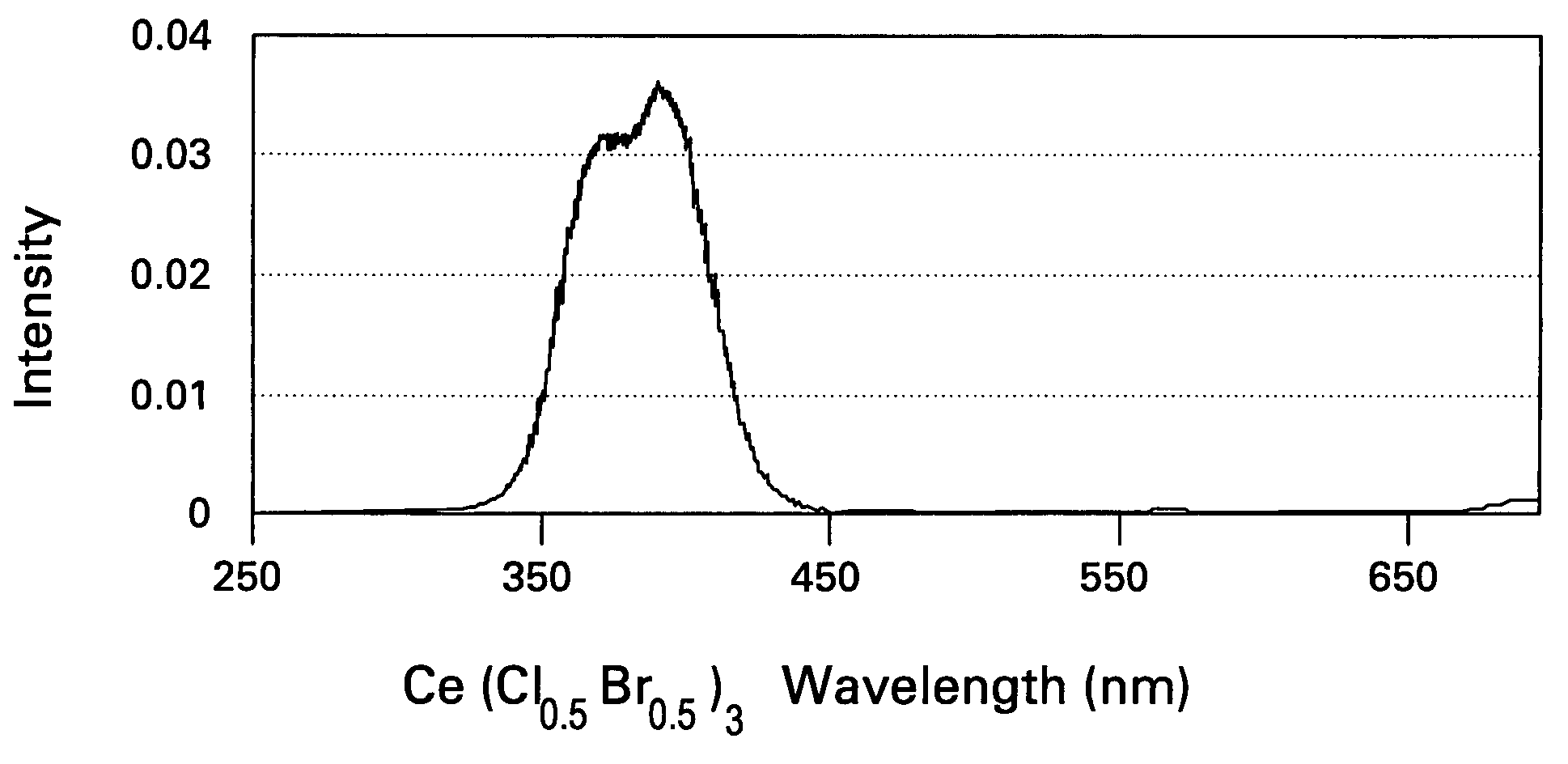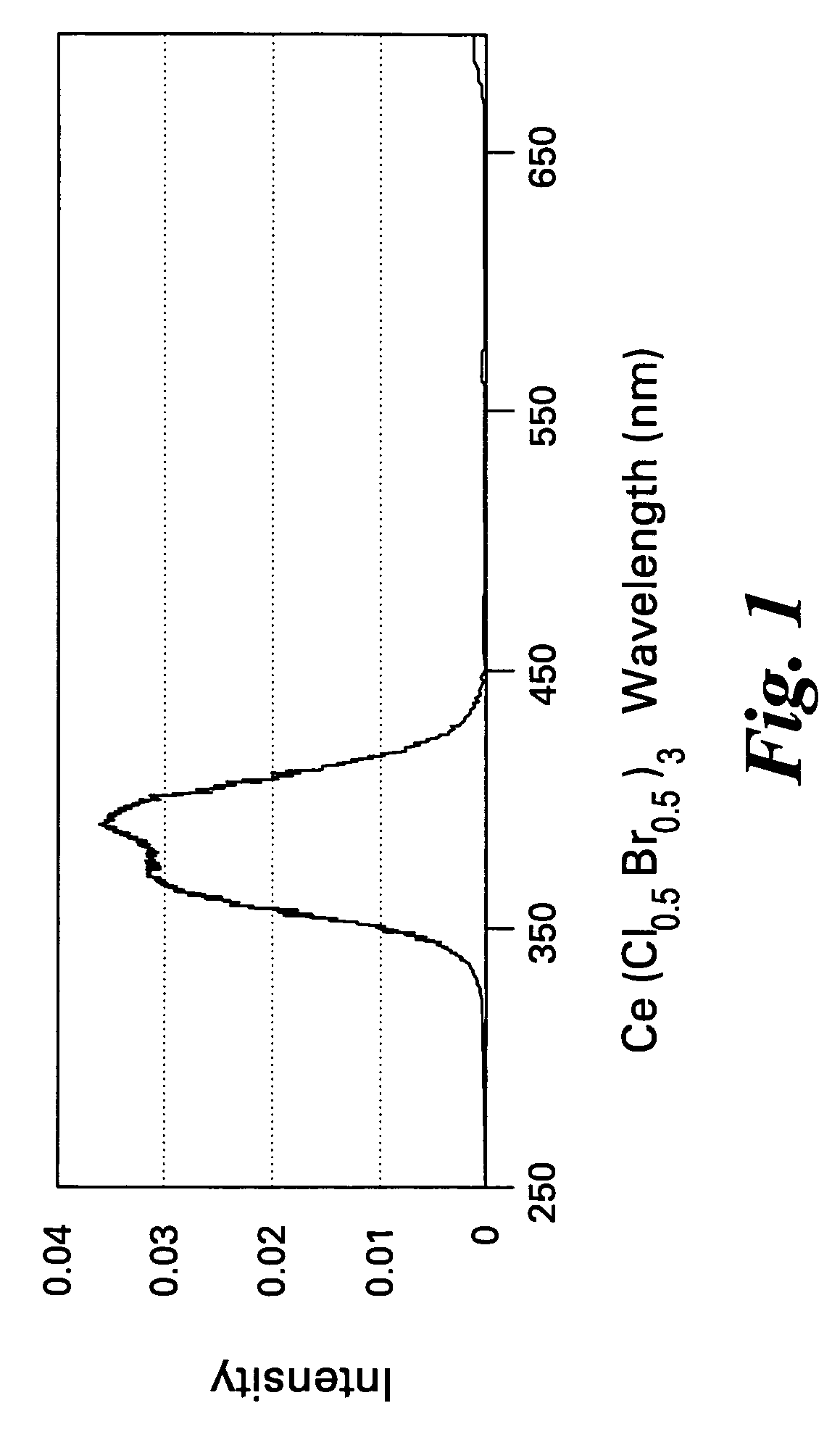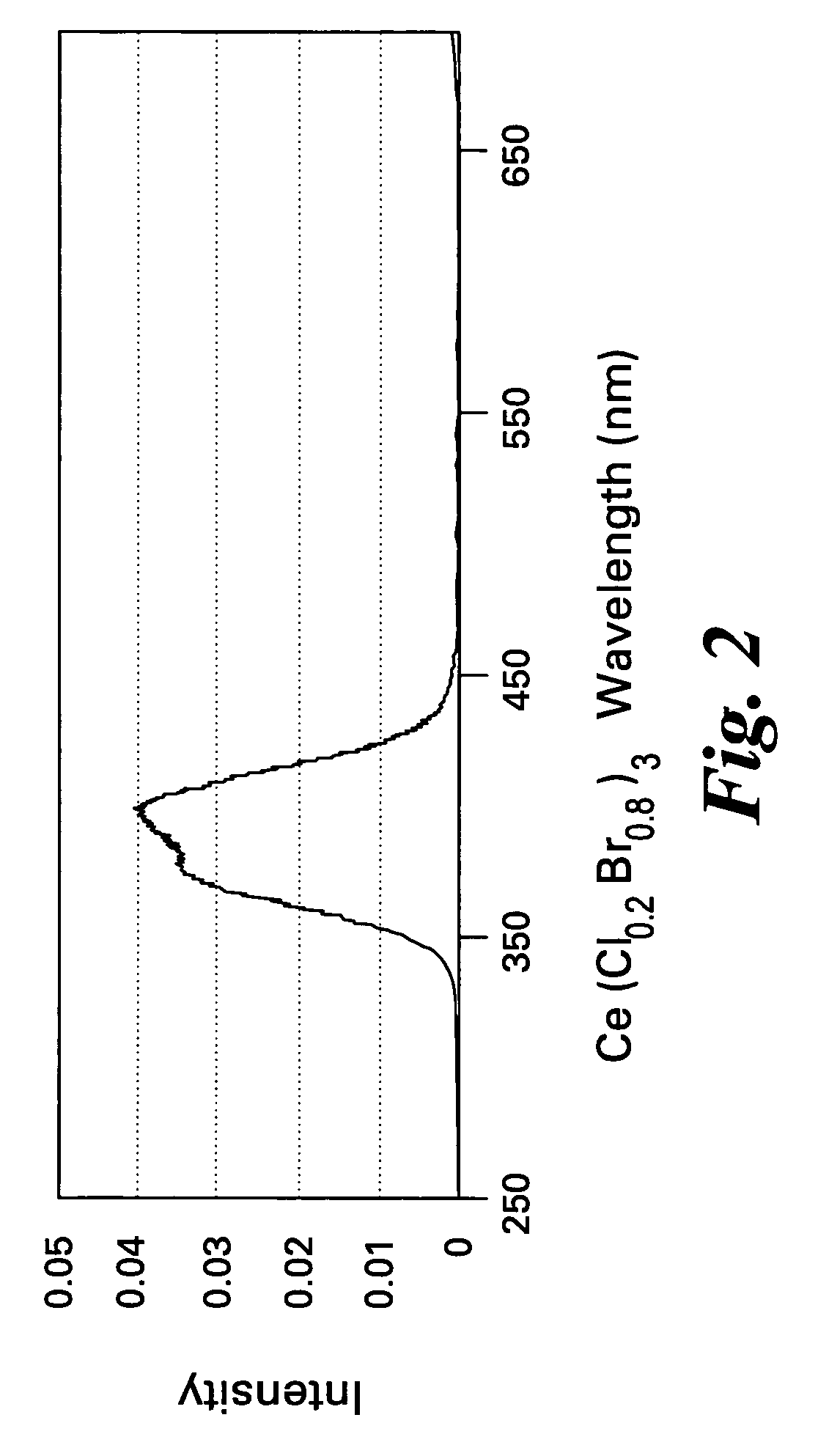Scintillator compositions of cerium halides, and related articles and processes
a technology of cerium halide and composition, which is applied in the direction of instruments, nuclear engineering, conversion screens, etc., can solve the problems of affecting the light yield of cerium halide, and affecting the intensity-counting system,
- Summary
- Abstract
- Description
- Claims
- Application Information
AI Technical Summary
Benefits of technology
Problems solved by technology
Method used
Image
Examples
examples
[0053]The example which follows is merely illustrative, and should not be construed to be any sort of limitation on the scope of the claimed invention.
[0054]Three scintillator samples were prepared, and then examined for light output analysis. Each composition was prepared by dry-mixing various portions of cerium chloride and cerium bromide. (All materials were commercially-obtained). Mixing was carried out in an agate mortar and pestle. The uniform mixture was then transferred to an aluminum crucible, and fired at a temperature of about 600° C. The heating atmosphere was a mixture of 0.5% hydrogen and 99.5% nitrogen.
[0055]In sample A, the molar ratio of cerium chloride to cerium bromide was 50:50. In sample B, the molar ratio of cerium chloride to cerium bromide was 20:80. In sample C, the molar ratio of cerium chloride to cerium bromide was 10:90.
[0056]The emission spectrum for each sample was determined under X-ray excitation, using an optical spectrometer. FIGS. 1, 2 and 3 corre...
PUM
| Property | Measurement | Unit |
|---|---|---|
| energy | aaaaa | aaaaa |
| decay time | aaaaa | aaaaa |
| temperature | aaaaa | aaaaa |
Abstract
Description
Claims
Application Information
 Login to View More
Login to View More - R&D
- Intellectual Property
- Life Sciences
- Materials
- Tech Scout
- Unparalleled Data Quality
- Higher Quality Content
- 60% Fewer Hallucinations
Browse by: Latest US Patents, China's latest patents, Technical Efficacy Thesaurus, Application Domain, Technology Topic, Popular Technical Reports.
© 2025 PatSnap. All rights reserved.Legal|Privacy policy|Modern Slavery Act Transparency Statement|Sitemap|About US| Contact US: help@patsnap.com



